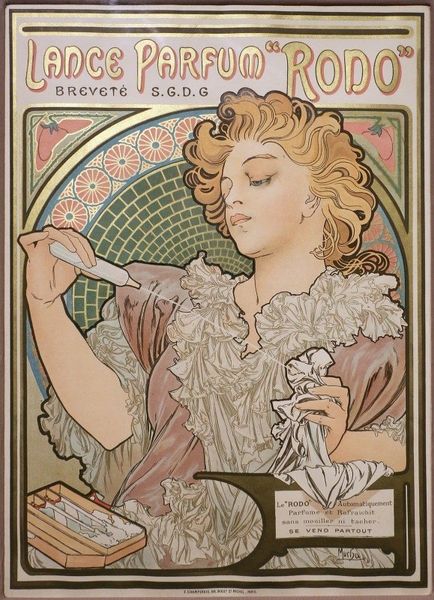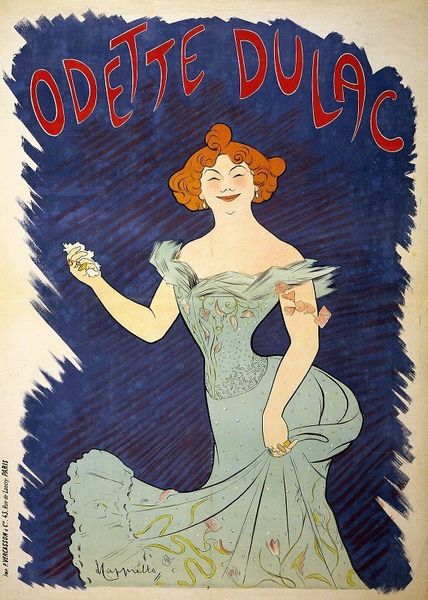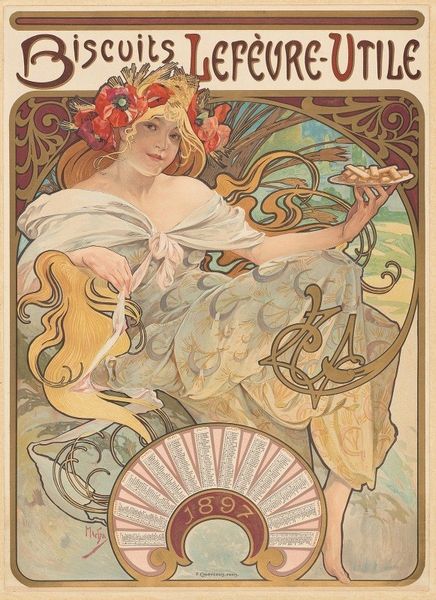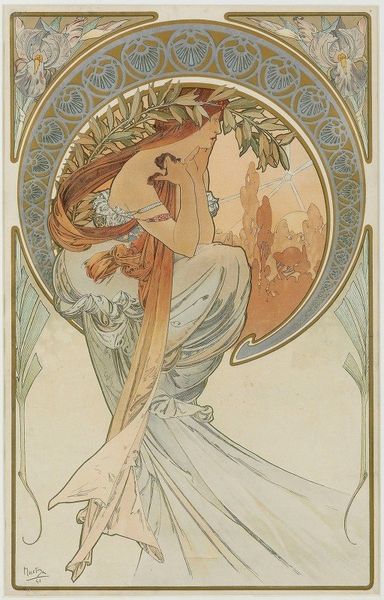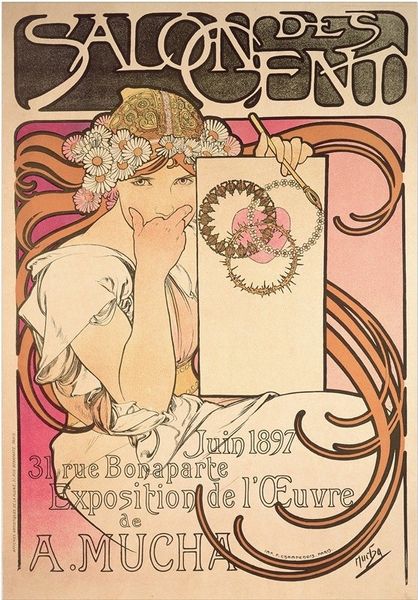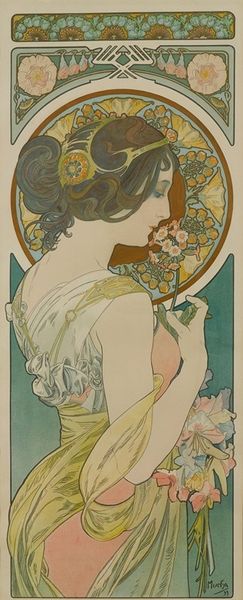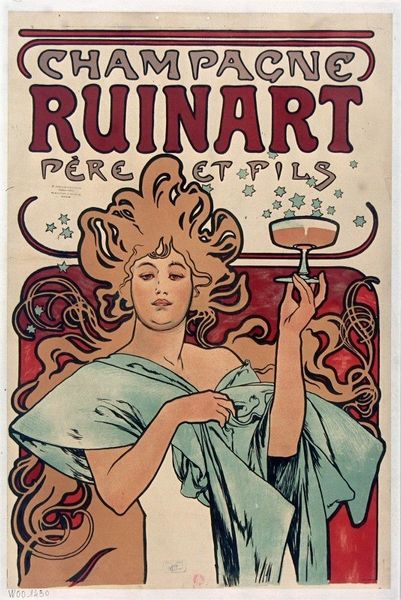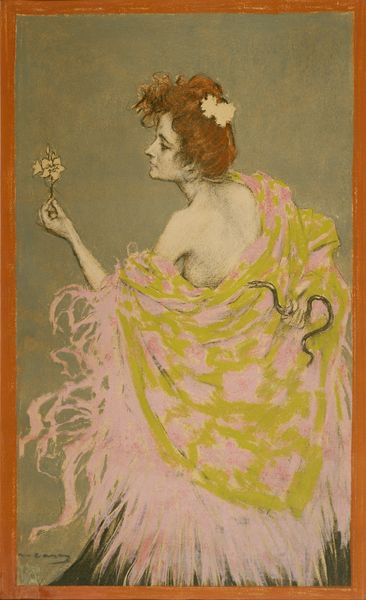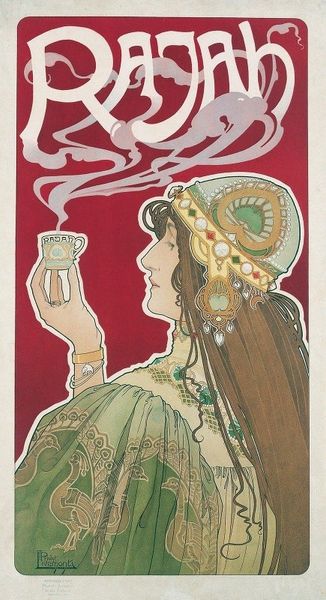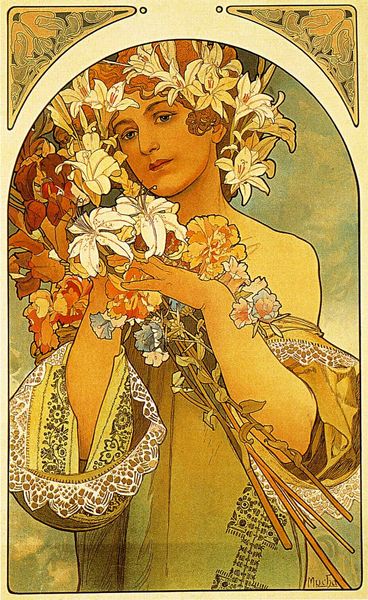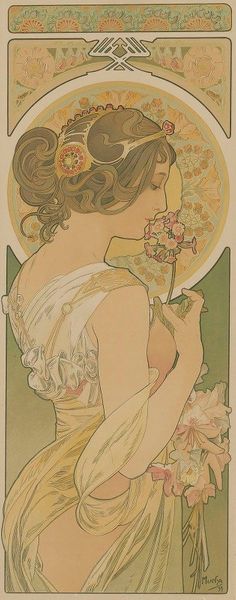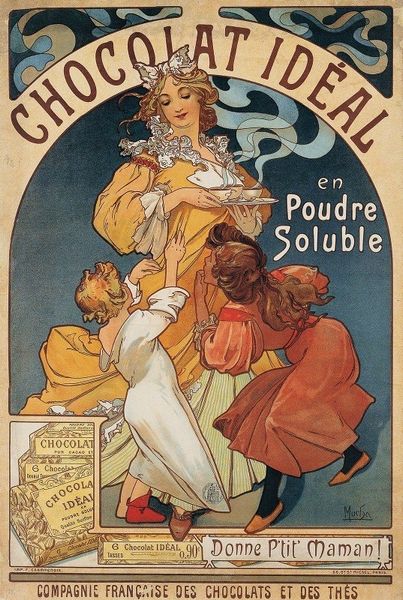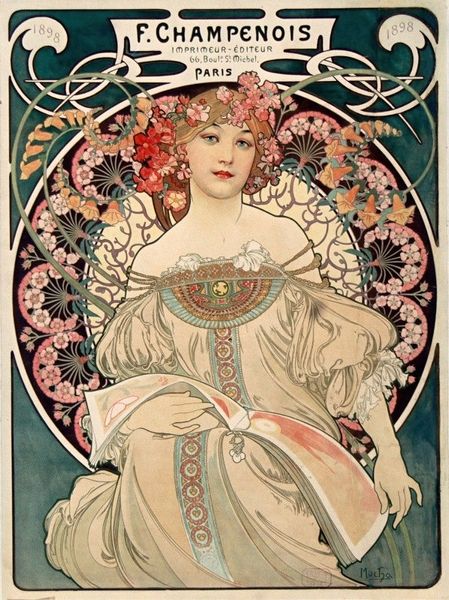
print, poster
#
art-nouveau
# print
#
caricature
#
figuration
#
symbolism
#
nude
#
poster
Copyright: Public Domain: Artvee
Editor: Here we have Henri Privat-Livemont’s 1896 print, “Absinthe Robette,” advertising absinthe. It’s a lovely, sinuous Art Nouveau piece, but the woman seems almost spectral. What should we make of its historical context? Curator: Well, consider that this poster appeared during the Belle Époque, a time of both optimism and underlying anxieties. The public role of art was shifting; posters weren't just advertisements, they were asserting themselves as art. Now, this isn't just selling absinthe, it's selling an experience, a mood. What does the imagery suggest to you? Editor: I notice the ghostly green absinthe and wisps of vapor, which suggest mystery. The woman's almost nude; is there a statement on feminine sensuality? Curator: Precisely. Nudity in art often carries charged political and social implications, especially concerning how women's bodies were portrayed and consumed. Was this poster liberating, exploitative, or somewhere in between? Editor: That’s complicated. Maybe the artist aimed to evoke an alluring but dangerous spirit associated with the drink? Curator: Exactly! Absinthe, nicknamed "the Green Fairy," gained a reputation for inspiring creativity and visions but also, as many thought, leading to madness. This poster plays into that mystique. Consider how this poster helped solidify absinthe's image as both glamorous and taboo in popular culture. Editor: That gives me a lot to think about. It’s much more than an advertisement; it’s reflecting societal ideas about creativity and excess. Curator: Yes! It shows how art interacts with—and shapes—social perception. Editor: That’s so fascinating to unpack. Thanks!
Comments
No comments
Be the first to comment and join the conversation on the ultimate creative platform.
